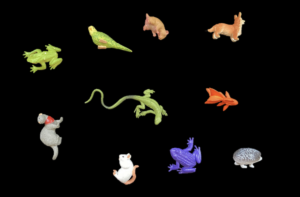Instructional materials Center
Cortical/Cerebral Visual Impairment (CVI)
Cortical visual impairment (CVI) is a form of visual impairment caused due to damage to the visual centers of the brain. Even though the child is looking at an object, the brain is unable to process the object. Louisiana has a list of disabilities that students are at the risk for CVI. Read the list
Planning to Support CVI
- Students Refer to Pupil Appraisal
- Parent Interview – May use the current LEA Parent interview.
- CVI Screener – performed at the beginning of the evaluation process. This screener is located in the “Health” section.
- Download CVI Screener
- Referred to Teaching Blind Student/Visually Impaired Teacher for Assessment
- Generate CVI Report
- Identify Phase
- Provide Instructional strategies
Bulletin 1508
In Louisiana, BESE approved the updated Bulletin 1508 on March,2023.
CVI Phases
Phase I
CVI Range Score 0-3
The goal is to build consistent visual behaviors
- Single color (learner’s preferred color)
- Movement (or movement properties)
- Familiar object
- Paired with light
- Extend from eye to hand
Phase II
CVI Range Score 3-7
The goal is to integrate vision with function
Use characteristics from Phase I
- Can view more than one color
- Movement (or movement properties) to initiate and occasionally sustain attention
- 3D preferred may begin to demonstrate eye to object contact with photograph of familiar toy
- Lighting paired with target
Phase III
CVI Range Score 8-10
The goal is to facilitate refinement of the characteristics
- Color highlighting
- Movement not required at near
- Symbol books and pictures regarded
- Novel objects/images discriminated based on salient features
- Backlit
CVI Screeners
These screening tools serve as an initial step in determining when to refer students who are suspected of having CVI for an assessment. The screening tools covers three ranges of visual functions: lower, middle, and higher visual functions.
Please note that these tools are designed for screening purposes and should not be used as diagnostic instruments.
Each screening questionnaire begins with a set of general inquiries about the child, encompassing medical, developmental, and visual issues. Following this, there is a series of questions specifically aimed at identifying signs of CVI. Parents, teachers, healthcare professionals, or individuals best understand the student should provide their best assessment for each question by selecting the number that is the most applicable to the student: (1) never, (2) occasionally, (3) frequently, or (4) always.
At the end of each screening questionnaire, space is provided for additional comments if needed, as well as a section to specify any questions that posed challenges in providing answers.
There are three distinct screening questionnaires, each tailored to different groups:
- CVI Screener 1
- CVI Screener 2
- CVI Screener 3
These three CVI Screeners could be access below. Each documents ends with the scoring list. The CVI Screener given in the “Planning to Support CVI” section of this page, provides a combined documents of all three Screeners without the scoring guide.
CVI Screener 1
CVI Screener 1 is desgined for students who have a motor disability and are non-ambulant.
CVI Screener 2
CVI Screener 2 is designed for students whose developmental age falls within the range of 2 – 6 years old.
CVI Screener 3
CVI Screener 2 is designed for students whose developmental age falls within the range of 6 – 12 years old.
Resources
To search for the CVI books created by educators across Louisana, search on our website by the name of the book or by the phases.
Scaffolding Tool: Word Bubbling
Path to Literacy: A place where people across the world post a blog sharing their tips, strategies, and resources.
APH: A place where you can purchase tools and resources.



